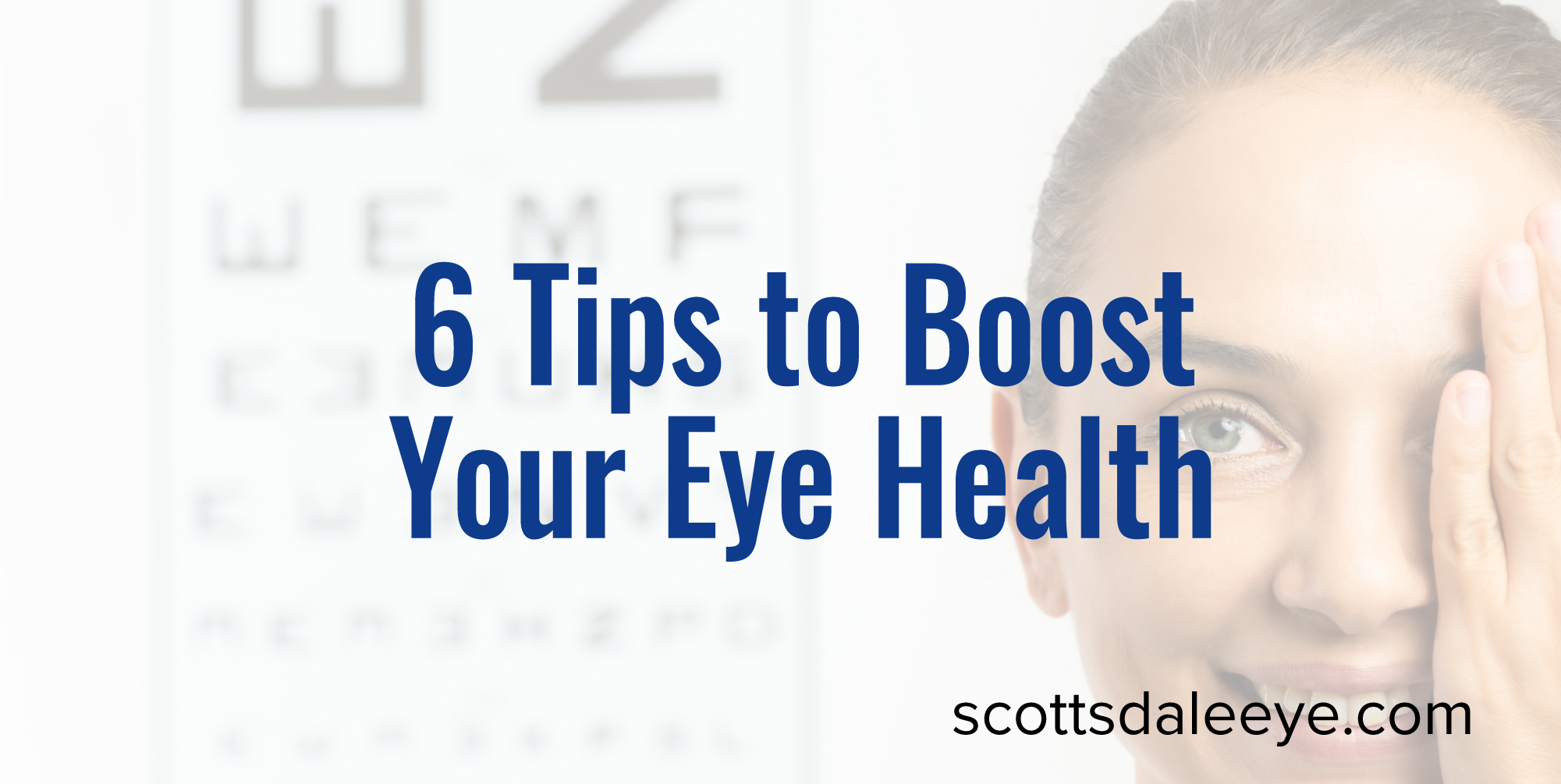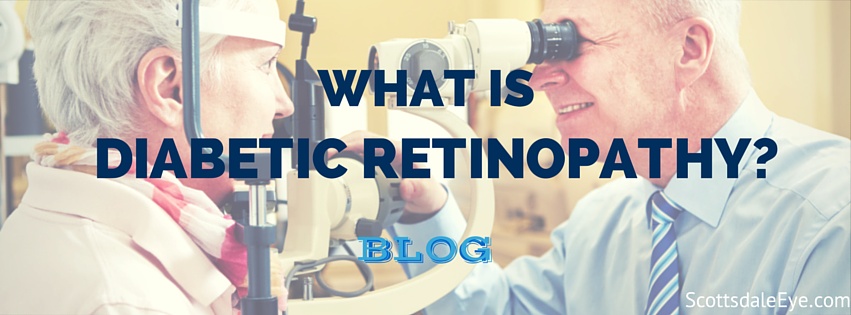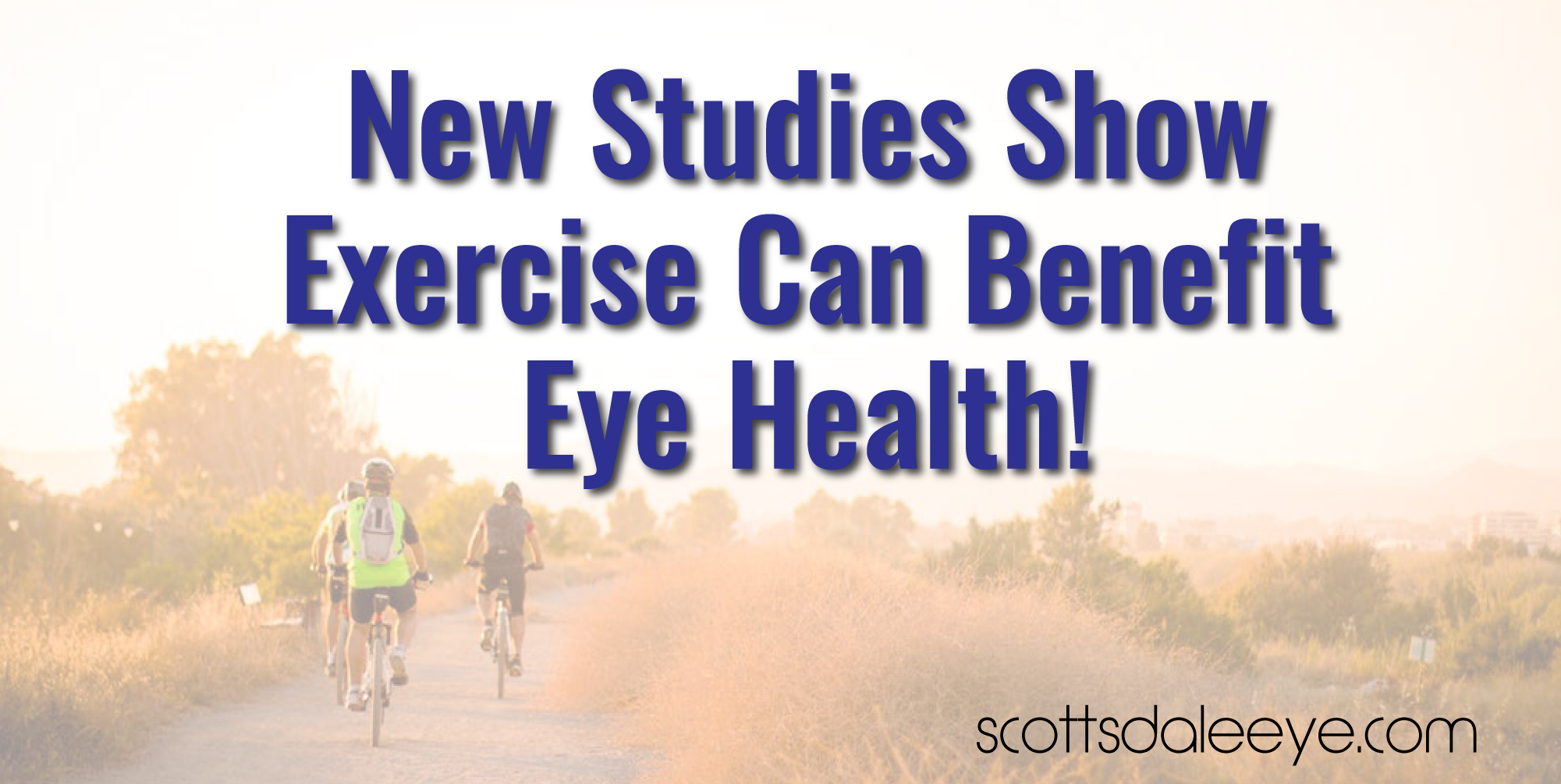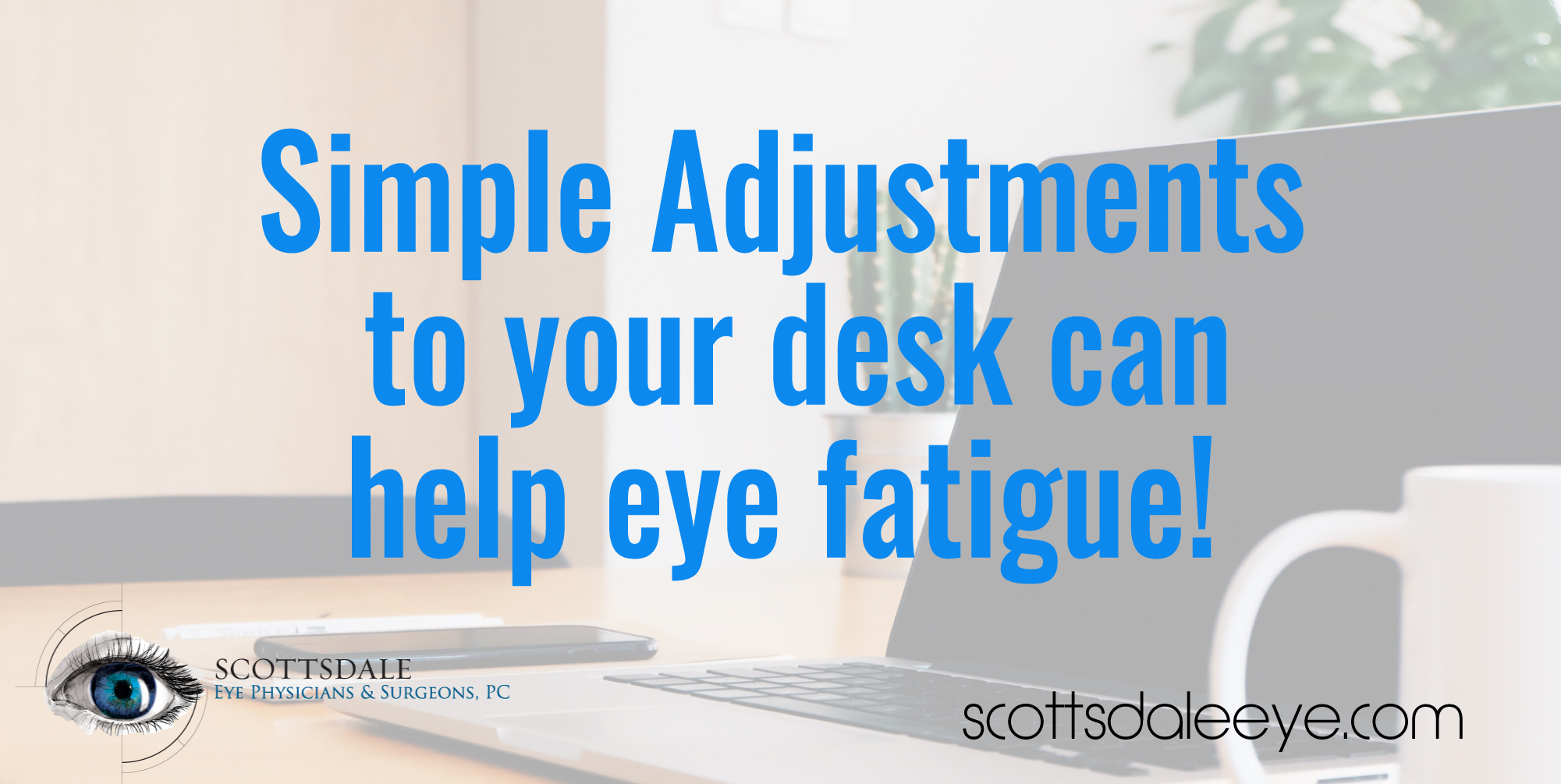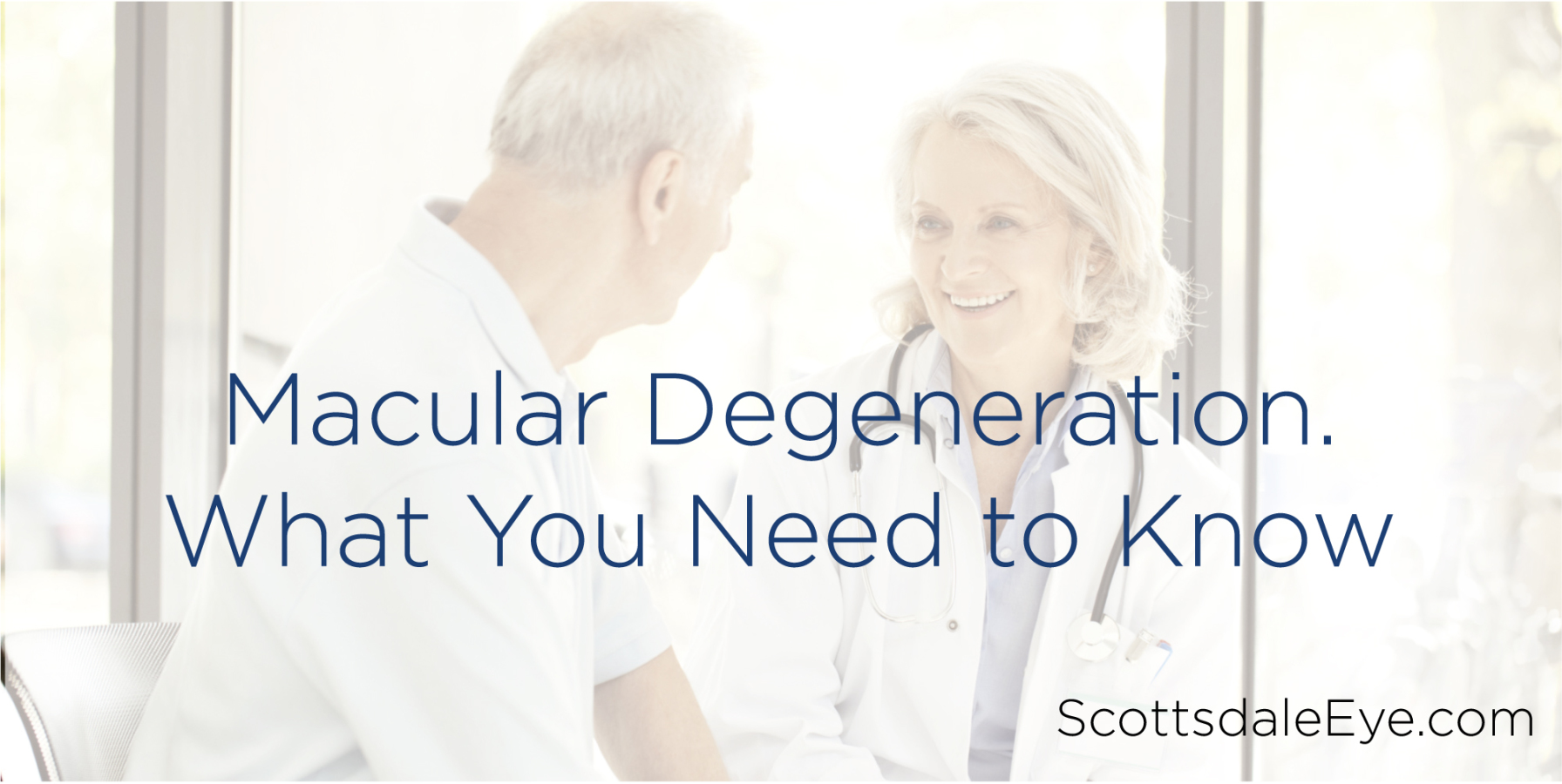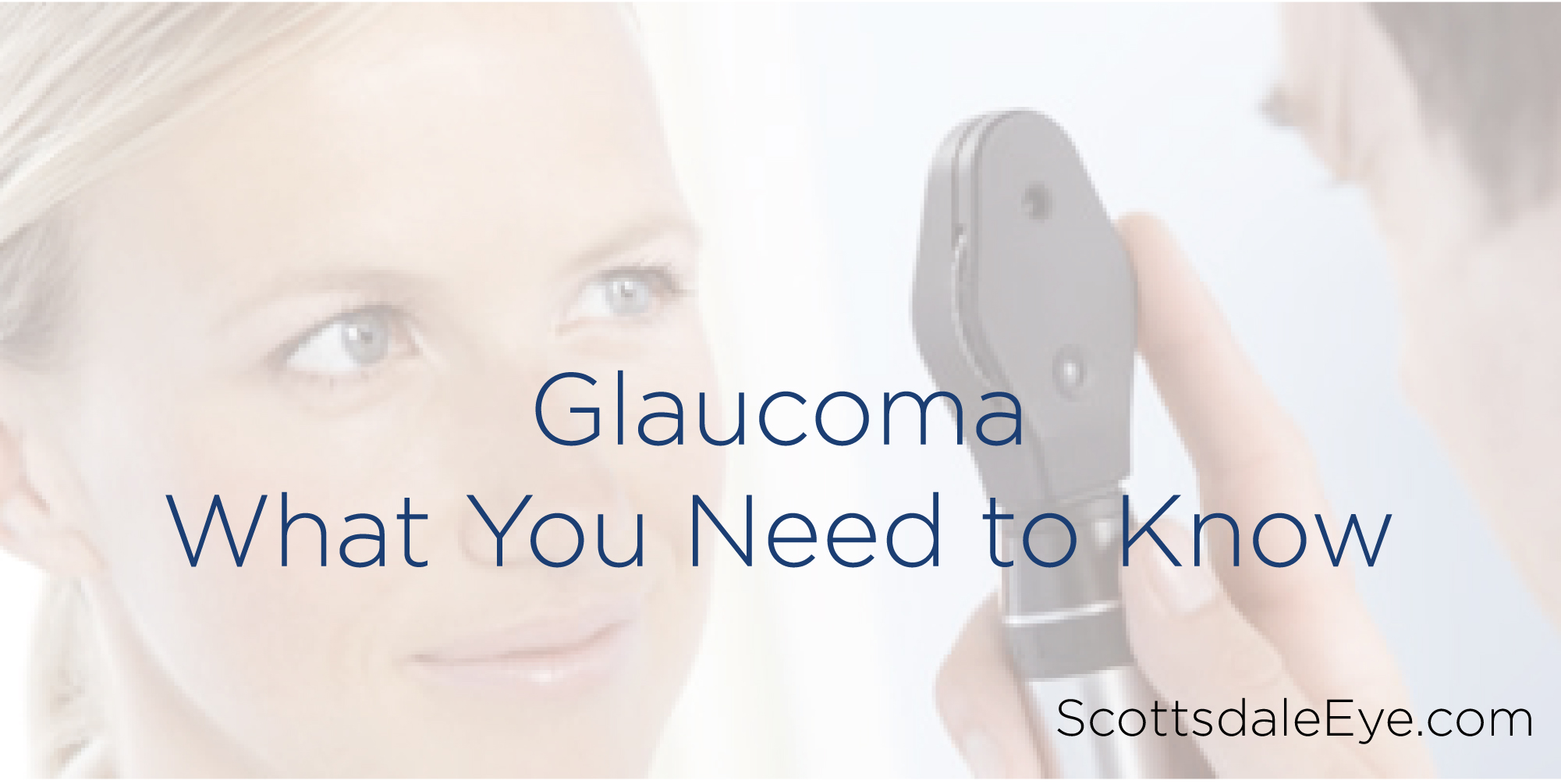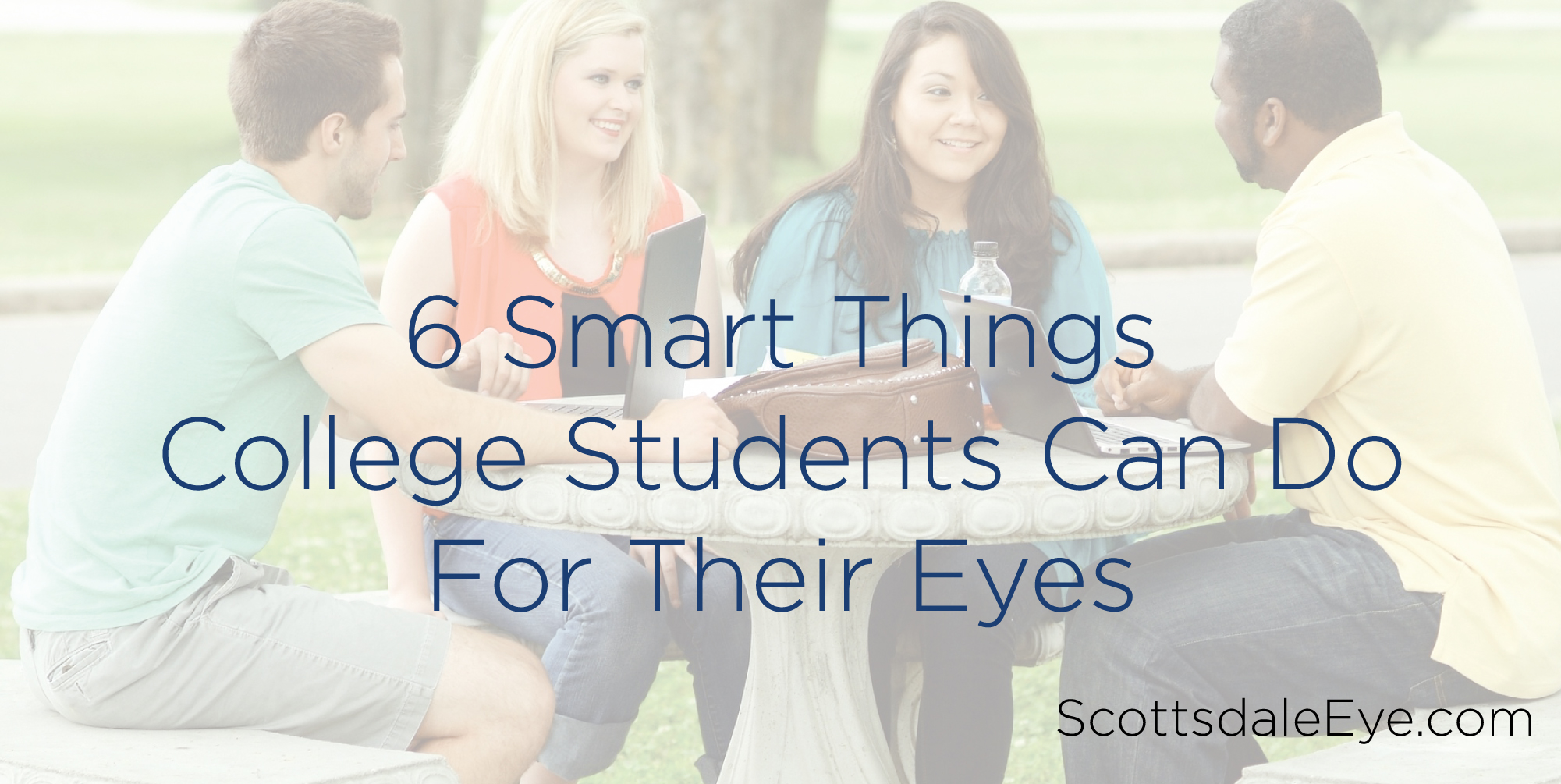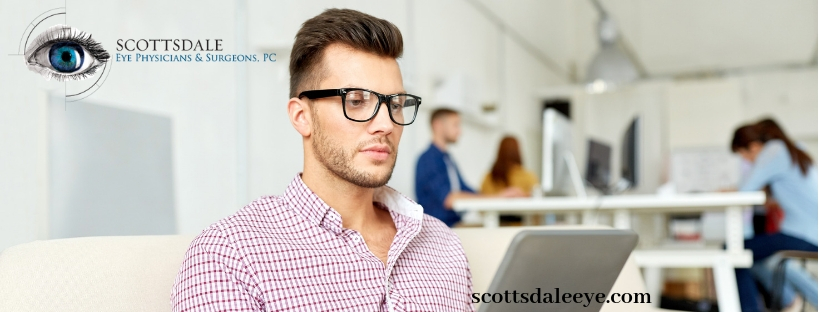Macular Degeneration, often referred to as Age-Related Macular Degeneration (AMD), is caused by the deterioration of the central portion of the retina. The retina’s central portion, known as the macula, is responsible for focusing central vision in the eye. It controls our ability to read, drive a car, recognize faces or colors, and see objects in fine detail. Macular degeneration is diagnosed as either dry or wet. Wet Macular Degeneration refers to growth of new blood vessels in the macula, where they are not supposed to be. The dry form of Macular Degeneration is more common than the wet AMD. Eighty five to ninety percent of patients are diagnosed with dry AMD. Macular Degeneration by itself will not lead to total blindness. In almost all cases, some vision remains and few Macular Degeneration patients experience total visual loss
Signs and Symptoms of Macular Degeneration
In its early stages, the condition may not have symptoms and may be unrecognized by the patient until it progresses or affects both eyes.
Symptoms include:
- Dark, blurry areas in the center of vision
- Diminished or changed color perception
- Distorted vision in which straight lines appears wavy or blank.
Causes and Risk Factors
- Aging: Approximately 10% of patients 66 to 74 years of age will have findings of Macular Degeneration. The prevalence increases to 30% in patients 75 to 85 years of age.
- Smoking: Research shows that smoking doubles the risk of AMD.
- Race: AMD is more common among Caucasians than among African-Americans or Hispanics/Latinos.
- Genetics & Family history: The lifetime risk of developing late-stage Macular Degeneration is 50% for people who have a relative with the condition, versus 12% for people who do not have relatives with the condition.
How is it detected:
AMD can be detected in a routine eye exam. Your doctor may also ask you to look at an Amsler grid, a pattern of straight lines that resemble a checkerboard. See how an Amsler grid works by taking a Macular Degeneration Test.
Management
No surgical treatment is available for this condition; however, there are very effective treatments available for “wet” macular degeneration. The National Eye Institute of the National Institutes of Health perform a large study, called AREDS (Age-Related Eye Disease Study), found benefits with some vitamin supplements along with high doses of antioxidants. The follow up study, AREDS2, showed that the antioxidants Lutein and Zeaxanthin also have benefits. These combinations of supplements have been suggested by the National Eye Institute to slow progression of the disease, click here for more info on these supplements!
Although much progress has been made recently in Macular Degeneration treatment and research, there is still no cure for this disease. Change your lifestyle now, quit smoking, wear UV filtered sunglasses, start taking the proper supplements and schedule your annual eye exam with one of our physicians today!
References:
“What is Macular Degeneration?” Web Blog Post. American Macular Degeneration Foundation.
“Adult Macular Degeneration.” Web Blog Post. Macular Degeneration Foundation.
“The Amsler Grid.” Web Blog Post. Macular Degeneration Partnership. 2015
“Facts about Age-Related Macular Degeneration”. Web Blog Post. National Eye Institute. July 2013.






